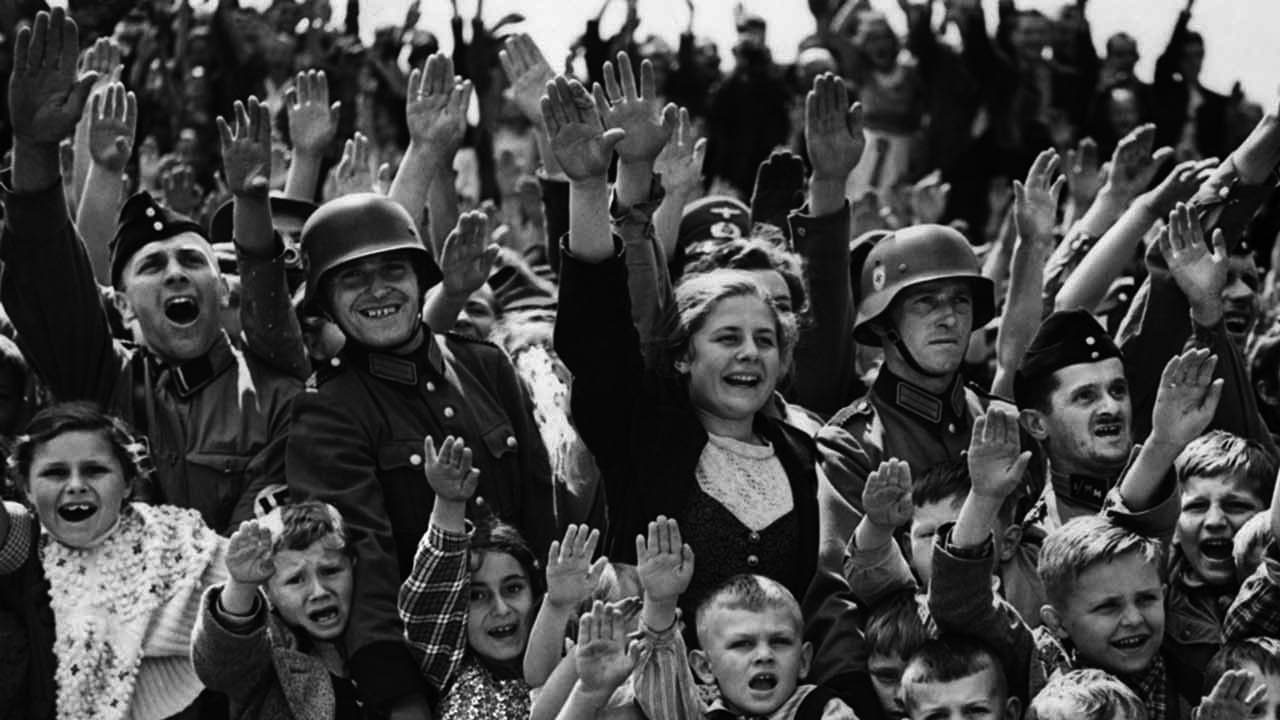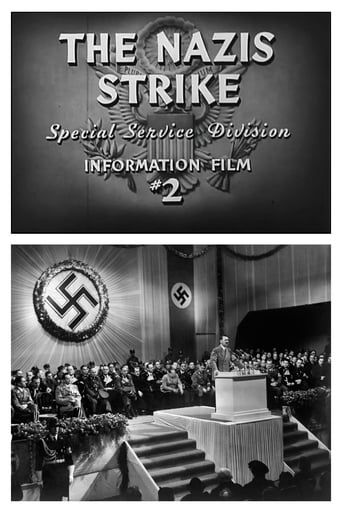



Perfectly adorable
An absolute waste of money
I was totally surprised at how great this film.You could feel your paranoia rise as the film went on and as you gradually learned the details of the real situation.
View MoreThere is definitely an excellent idea hidden in the background of the film. Unfortunately, it's difficult to find it.
View MoreIt's a roughly accurate account of Hitler's build up of Germany's armed forces, in violation of the Treaty of Versailles that ended the first world war, and how Hitler used threats, diplomacy, and military might to acquire the Rhineland, Austria, Czechoslovakia, and Poland.Until his invasion of Poland, the rest of the Allied countries allowed him to wheedle and lie his way across an awful lot of territory without firing a shot. Daladier and Neville Chamberlain accepted Hitler's written promise that, after Czechoslovakia, he wanted to more territory. Most of us have seen poor humiliated Chamberlain waving the Munich treaty and proclaiming "peace in our time." In some ways, the Munich accords were the worst thing that happened during that lead up to the war because, since then, no country has EVER initiated a conflict against an adversary without invoking Chamberlain and Munich.What were Chamberlain's and Daladier's options? Could we have avoided World War if Chamberlain, instead of signing the Munich agreement, had immediately declared war on Germany? In gambling on Hitler's willingness to keep his word, and losing, Chamberlain provided the rest of us with an unshakable historic argument against "appeasement," which has managed to contaminate the concept of negotiations ever since. When offended, never appease, just attack.You can make documentary movies that aren't slanted. I've seen training films on the assembly and maintenance of the M-1 rifle. But propaganda movies are an interesting genre in their own right, blending as they do entertainment with slanted information.This example isn't particularly artful. It's not Leni Riefenstahl's "Triumph of the Will." But, with graphics provided by the Walt Disney Studio, it can hardly go wrong. You can watch the black blot of Germany in central Europe spread its tentacles over the rest of the continent, gobbling it up like an octopus.The film has the usual proletarian propaganda techniques. A voice over with an abominable German accent says, "Vot do vee care about dzah rest of dzah worlt? Ve vant all off it!" Short, simple, out-of-context quotes are taken from speeches by Nazi officials and from "Mein Kampf." And every parade has the Nazis goose stepping.But that's all expectable. The enemy is demonized and called names like "thugs" and "butchers." What's more interesting in propaganda is what's left out.Example: After demolishing Poland's horse cavalry and the city of Warsaw, Germany occupied all of western Poland. (No mention ever of the Warsaw uprising.) Then the Soviet Union waltzed in and took over the EASTERN half of Poland, promptly signing a non-aggression pact with the Germans. How did that come to pass? Well, it's all very simple, according to this film. Hitler HAD to stop because he didn't want to open a second front against Russia, and Stalin agreed because he needed time to build up his armed forces. Easy to grasp, but it doesn't tell us why the Soviet Union occupied eastern Poland in the first place. The Poles, by the way, lacked nothing in elan. Many who escaped fought bravely as units of the RAF, and it was Polish troops who finally managed to occupy Monte Casino in Italy after all the Allies had suffered massive casualties.Also missing is any mention of military tactics. That the Germans outnumbered in men and equipment all of the enemies they fought is established early on. But of course that's not the whole answer. I don't think the word "Blitzkrieg" is used but that subject may be saved for Part 2.But that's the problem with all propaganda. It's like a witness in court who tells nothing but the truth, but not the whole truth. It can provide an effective pep talk but, in its selective presentation of facts, it can also be extremely dangerous.
View MoreThe second of the Why We Fight Series concentrates on Hitler's grab of the Sudetanland and beyond as he makes a chump out of Neville Chamberlain and embarks on his conquest of Europe. Clearly meant as propaganda in its day this series over the test of time has become an informative documentary as well with most of the "Allied bias" turning out to be historical fact. The Fuhrer hoists himself on his own petard with smug pronouncements before his people and the world as he says one thing and does another as his army moves East. The Czechs and Austrians quickly capitulate but the Poles put up an heroic struggle against overwhelming odds. The disparity between Hitler's military might and Chamberlain waving the Munich treaty like a white flag, declaring "Peace in our time" to this day has durable propaganda qualities. Here in its original context it resonates even more powerfully as the darkness of World War ll sets in on Europe leaving the American viewer with two options, freedom or slavery. In 1943 there was no evading this simple truth and The Nazis Strike makes its point effectively.
View MoreAdolf Hitler's maniacal desire to impose his will on the rest of the world is the subject of this second in a seven part series of films produced by the U.S. War Department as an instructional tool for new soldiers entering the Armed Forces during World War II. Hitler's plan was methodical and well conceived, starting with the conquest of Eastern Europe, expanding to the European heartland, then moving on to the 'World Island' consisting of Europe, Asia and Africa. His final move would be to reach across the oceans for the ultimate conquest of the Americas and the World.In 1935, Hitler ordered national conscription, as the rest of the country fell under his evil spell. Grade school children sang his praises, and young German boys received training and indoctrination in military camps. Marching unopposed into Austria in 1938, Hitler followed by annexing a strip of land bordering Germany and Czechoslovakia called Sudetenland. In 1939, Hitler took all of Czechoslovakia. Later in the year, the world was stunned to learn that Germany signed a non-aggression pact with it's mortal enemy Russia, a ploy to delay Hitler's military involvement on too many fronts. Immediately after, Germany invaded Poland, bringing Hitler's conquest right to Russia's doorstep. He would deal with her later.It was during this period that Britain still declined to oppose Hitler's thrust across Europe. Prime Minister Neville Chamberlain felt he procured a great victory for his country by accepting a treaty with Germany, his infamous declaration stating 'Peace in Our Time'. It didn't turn out that way.The most fascinating information to be learned in this installment, at least to me, was provided by a small snippet of footage from a German pro Hitler rally in the mid '30's. It was led by a German American taking his cue directly from the homeland. The venue - Madison Square Garden!
View MoreFrank Capra did a masterful job taking the propaganda tool of the Nazis and turning it against them. He devised the simple but effective means of taking captured Nazi propaganda newsreels and showing them with new narration and with music. The result -- showing the Nazi horror for what it was.The WHY WE FIGHT series of 7 films is still very powerful and moving. We can only imagine how rousing the material was in the dark days of World War II when it was shown to the US troops in battle zones.The difference between Capra's propaganda and Hitler's is that Capra used the tool to teach ideals rather than to seduce and entrance the minds of people. Capra's films were just as strong ammunition as and tanks and planes, and they are remarkably durable after all these years. They still stand for the ideals of democracy. Such is the art of a master moviemaker.
View More